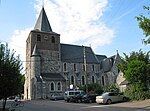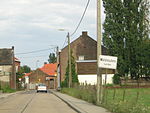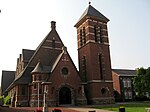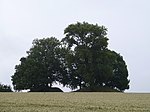Avernas-le-Bauduin Airfield
AC with 0 elementsAirports in Liège (province)European airport stubsLiège geography stubs

Avernas-le-Bauduin Airfield (ICAO: EBAV) is a club aerodrome located near Hannut, Liège, Wallonia, Belgium. It only serves ULM planes. many of which are based there.
Excerpt from the Wikipedia article Avernas-le-Bauduin Airfield (License: CC BY-SA 3.0, Authors, Images).Avernas-le-Bauduin Airfield
Rue de la Tombe,
Geographical coordinates (GPS) Address Nearby Places Show on map
Geographical coordinates (GPS)
| Latitude | Longitude |
|---|---|
| N 50.706666666667 ° | E 5.0680555555556 ° |
Address
Aero Club de Hesbaye
Rue de la Tombe
4280
Liège, Belgium
Open on Google Maps









